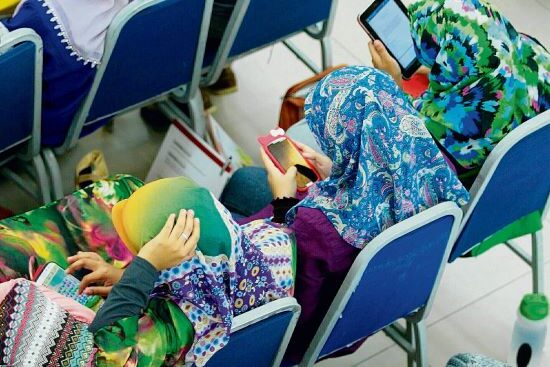JULY 23 — Should sign language be taught in schools?
After a heartwarming video from @nabilanazrol on TikTok regarding his communication with his parents via sign language, netizens commented on how we should use sign language to accommodate the deaf and mute in schools as it makes communicating much easier than making them feel left out in some occasions.
In Malaysia, we use Bahasa Isyarat Malaysia (BIM), and although there are some schools for specialised kids, they are often in the minority. Hence, netizens discussed how sign language should be applied and taught in all schools.
Not only could we communicate effectively by learning sign language, but learning BIM could nurture friendships and bridge communication gaps, especially for kids with additional needs, making socialisation smoother and more enjoyable. It helps them feel included.
Diverse schools are known to provide superior academic results. When BIM is integrated into the curriculum, it encourages diversity and prepares students for a society that embraces information in various forms.

Learning sign language promotes inclusion and accessibility, allowing everyone to communicate freely without any barriers, says the author. — Picture by cottonbro studio/www.pexels.com
Not only students but this action applies to everyone who wants to learn sign language to help people in need. For people who have the privilege to hear and talk, we should be grateful and take the initiative to make their lives easier and make them feel seen. “To be loved is to be seen,” they say.
Learning sign language promotes inclusion and accessibility, allowing everyone to communicate freely without any barriers.
Then, taking the time to learn sign language, nurtures an individual to embrace deafness and its culture. It is a powerful concept that encourages people to recognise it as a part of an individual’s identification and appreciation for the richness of deaf culture and sign language.
Moreover, having SODA (siblings of deaf adults) and CODA (children of the deaf community) holds a unique place within the deaf community as it plays a crucial role in the bridge between the deaf and hearing worlds.
Other than that, it can open doors to employment since we have companies that need someone who has knowledge of sign language to deal with their clients. Adopting another language can expand your employment opportunities in your careers such as education, interpreting, social work, counselling, and many more.
Psychologically, other than being a communication tool; it is a unique language with its own syntax, vocabulary, and cultural subtleties. Learning sign language provides insight into the rich deaf culture and community. It enables us to value variety, challenge preconceptions, and foster connections between diverse languages and cultural groups.
Let’s all unite to make the world more accessible and comfortable for those in need as it is an ugly feeling to be cast aside like a different species due to the lack of function like a normal human being. This talent not only improves our personal and professional connections, but it helps us develop cultural knowledge and empathy. The process of learning sign language is continuous, with new chances for growth and connection.
* This is the personal opinion of the writer or publication and does not necessarily represent the views of Malay Mail.







